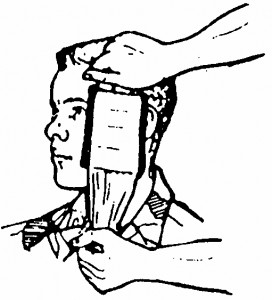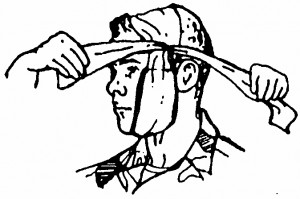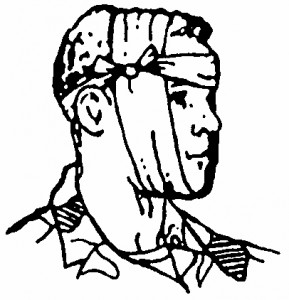a. Remove the field dressing from its wrappers, grasp a tail in each hand, hold the dressing in a vertical position with the white sterile side of the dressing toward the wound, pull the dressing open, and place the dressing pad on the wound (figure 5-7).

b. Place one hand on the dressing to keep it from slipping. If the casualty is able, you can have him assist by holding the dressing in place.
c. Bring the top (uppermost) tail over the top of the head, down in front of the ear on the uninjured side, under the chin, up the side of the face, and over the dressing to a point just above the ear (a full circle). Make sure the tail remains wide and close to the front of the chin when passing under the chin.
d. Bring the other tail down, under the chin, up the uninjured side in front of the ear, and over the top of the head until it meets the first tail.
e. Cross the two tails just above the ear on the injured side of the head (figure 5-8).

f. Bring one tail across the forehead (above the eyebrows) to a point just in front of the opposite ear (the ear on the uninjured side of the head). Bring the other tail above the ear, low behind the back of the head at the base of the skull, and above the other ear until it meets the first tail.
g. Tie the tails in a non-slip knot just above and in front of the ear on the uninjured side of the head (figure 5-9). Tuck in the ends of the tails.

